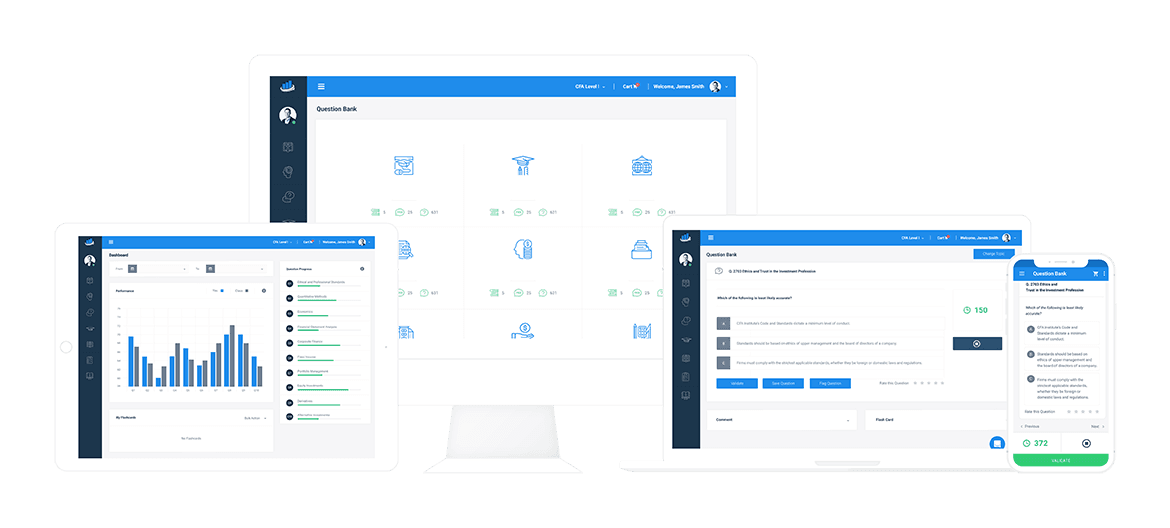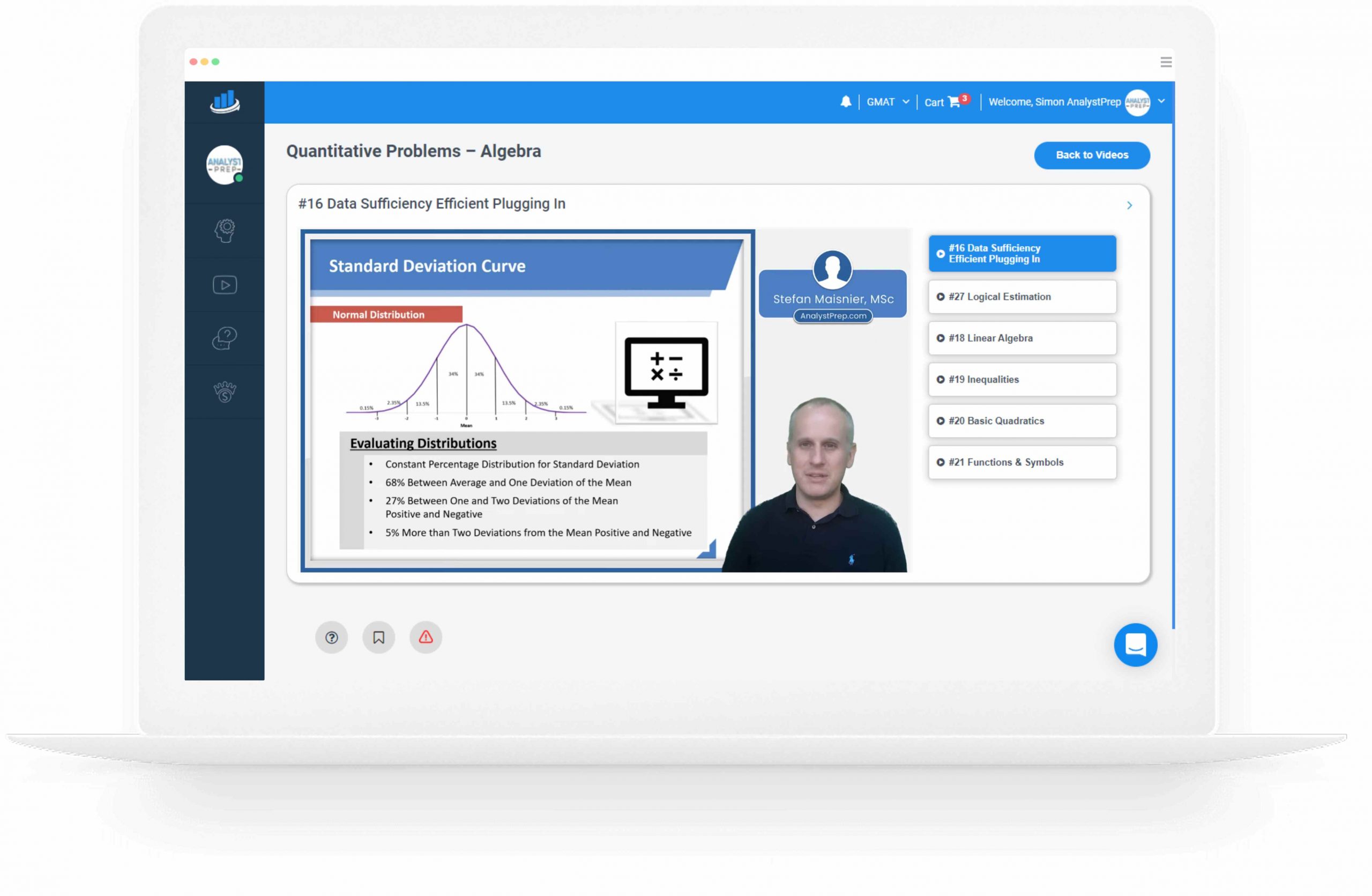Expert On-Demand GMAT Focus Prep
Achieve Your Dream Score!

Helping Thousands of Candidates get into Top MBA Schools
The AnalystPrep Platform for Your Online GMAT Focus Prep

Get the Most for Your Money
Get 12-month access to top-notch GMAT study materials for as low as $39. Find your perfect GMAT study package.
Study in the Comfort of Your Home
Study anywhere, anytime, from your device of choice. AnalystPrep’s GMAT study resources are accessible on desktops, tablets, or smartphones.
Customized Learning Just for You
At AnalystPrep, there’s no one-size-fits-all study method for GMAT preparation. Work with a GMAT study plan customized to your learning needs.
Score Improvement Guaranteed
We are confident your GMAT score will improve when you study with AnalystPrep.
Learn Only from GMAT Experts
All our GMAT study resources are developed by experts with decades of experience teaching the GMAT content.

Study with Prep Materials that Cover All GMAT Test Sections Comprehensively
The three GMAT Focus Edition test sections are crucial in achieving your total score. Our GMAT Focus question banks, featuring carefully selected questions, are specifically designed to enhance your skills across these sections for a top-notch performance in the GMAT Focus Edition.
GMAT Focus Quantitative Reasoning Practice
Sharpen your numerical literacy and mathematical abilities with AnalystPrep’s extensive resources for the Quantitative Reasoning section. Our video lessons and study notes cover this area comprehensively, providing numerous questions and quizzes. Get ready to excel in the 45-minute Quantitative Reasoning section of the GMAT Focus Edition.
Verbal Reasoning GMAT Focus Practice
Enhance your reading and comprehension skills with AnalystPrep’s targeted practice questions for the Verbal Reasoning section of the GMAT Focus Edition. Our materials help you practice completing this section within the 45-minute timeframe, building your confidence and proficiency.
Data Insights GMAT Focus Practice
Develop your data analysis and interpretation skills with AnalystPrep’s focused practice for the GMAT Focus Edition’s Data Insights section. Our resources, including detailed study notes and practice questions, are tailored to prepare you for this critical component of the exam, which involves understanding and analyzing data in various formats.
Comprehensive GMAT Focus Edition Preparation
AnalystPrep’s GMAT Focus Edition study platform offers a holistic approach to preparing for the exam. With our comprehensive question banks, you can thoroughly prepare for all the sections of the GMAT Focus Edition, ensuring a well-rounded performance and a high score.
How long does it take to get GMAT Focus exam results?
What are the GMAT Focus requirements?
How hard is the GMAT Focus?
What GMAT score is required for the Top 15 MBA program?
How long does it take to prepare for the GMAT?
What's the GMAT cost?
When can I take the GMAT Focus exams?
Can I take the GMAT Focus test multiple times?
How does GMAT Focus scoring work?
Questions Answered by our Users
Satisfied Customers
Preparation Platform By Review Websites
GMAT Prep Feature Highlights
- Unlimited, customizable GMAT quizzes
- 1000+ GMAT practice questions
- 40 hours of GMAT video lessons
- Performance tracking tools
- Compare practice results with 3000+ GMAT enrolled GMAT learners
- Monthly billing
- Unlimited ask-a-question sessions with an GMAT tutor via live chat

GMAT® Prep Packages
GMAT Focus Complete Package
$
39
/ month
- Conceptual Video Lessons
- Quantitative Practice Problems
- Verbal Practice Problems
- Data Insights Practice Problems
- Customizable Quizzes
- Performance Tracking Tools




